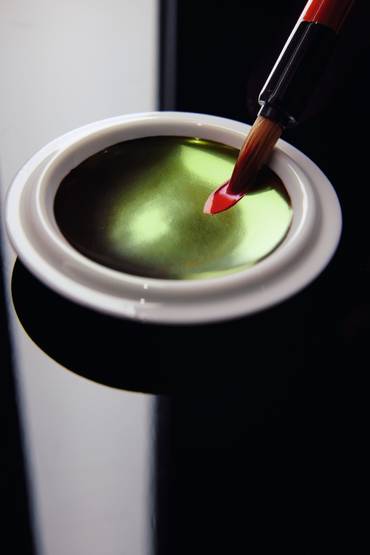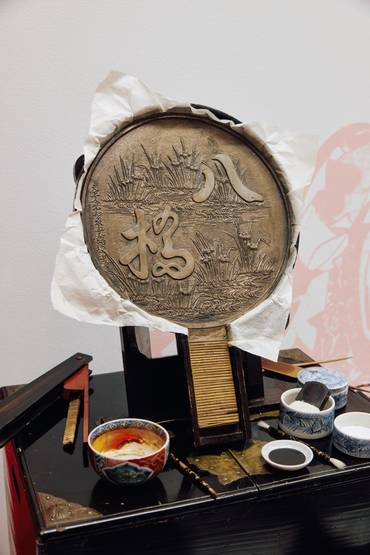Edo Tokyo Kirari Monocle
Making new treasures
Using old methods
Look behind its modern façade and Tokyo, once known as Edo, reveals itself to be a city of craftsmanship. In workshops across the city, artisans are still using traditional skills, preserving centuries-old techniques in everything from confectionery to cosmetics and keeping them relevant in the modern world. The Edo Tokyo Kirari project is putting a spotlight on some of these historic Tokyo names. Visit the website for the full story and the chance to buy a selection of new products, including scarves printed by hand and zori sandals that have been given a contemporary twist.
store.kirari.metro.tokyo.lg.jp


Yotsuya Sanei
Sandal-maker
Japanese traditional sandals, known as zori and geta, might look simple but a significant element of artisanship goes into the crafting of every pair. Established in 1935, Yotsuya Sanei is a renowned maker, catering to geisha, tea ceremony practitioners and regular customers. Second-generation president Sotaro Ito runs the family affair at the workshop-cum-retail shop in Shinjuku. “We grew up in an era where we had to make things by hand creatively by ourselves,” says the 82-year-old.
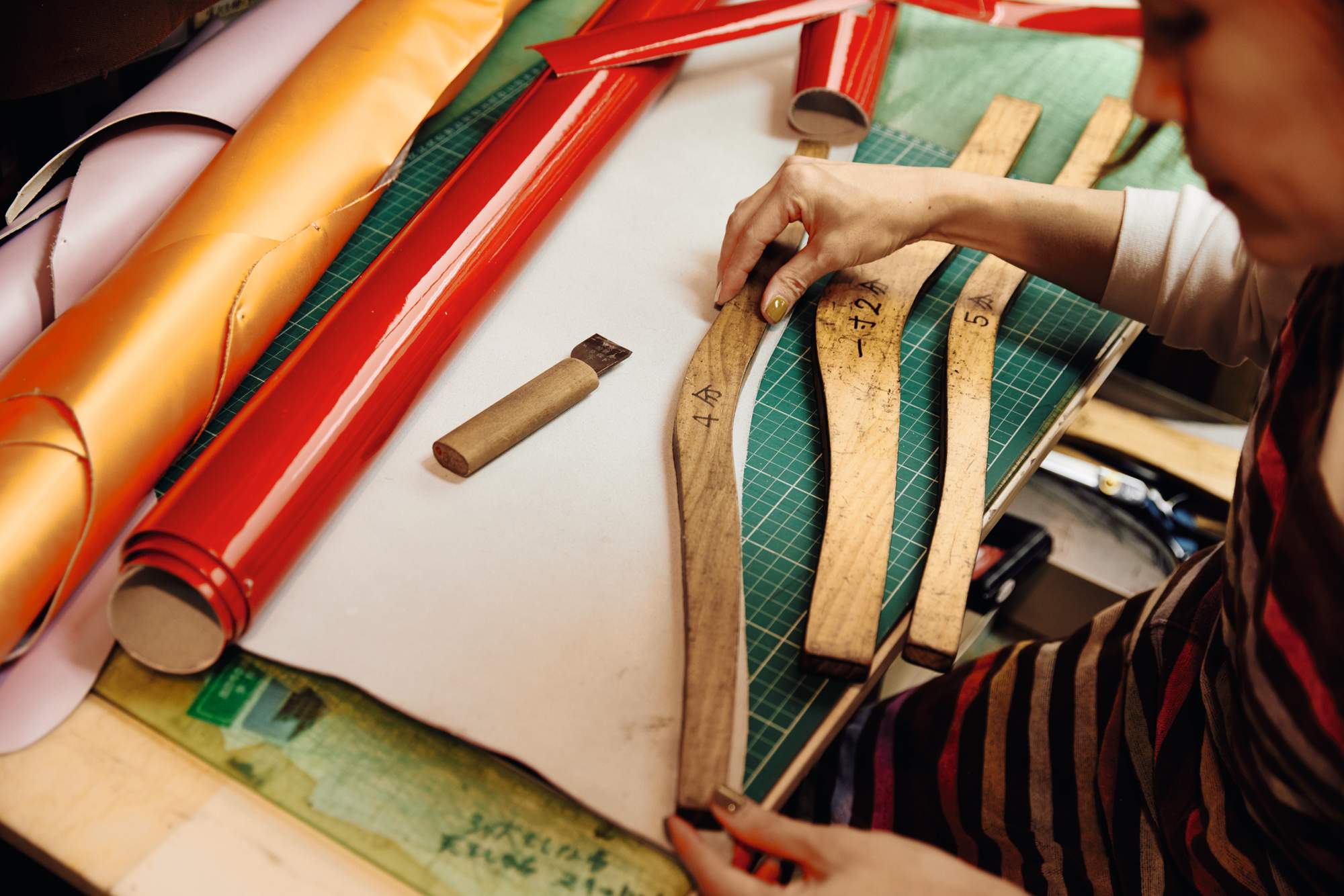
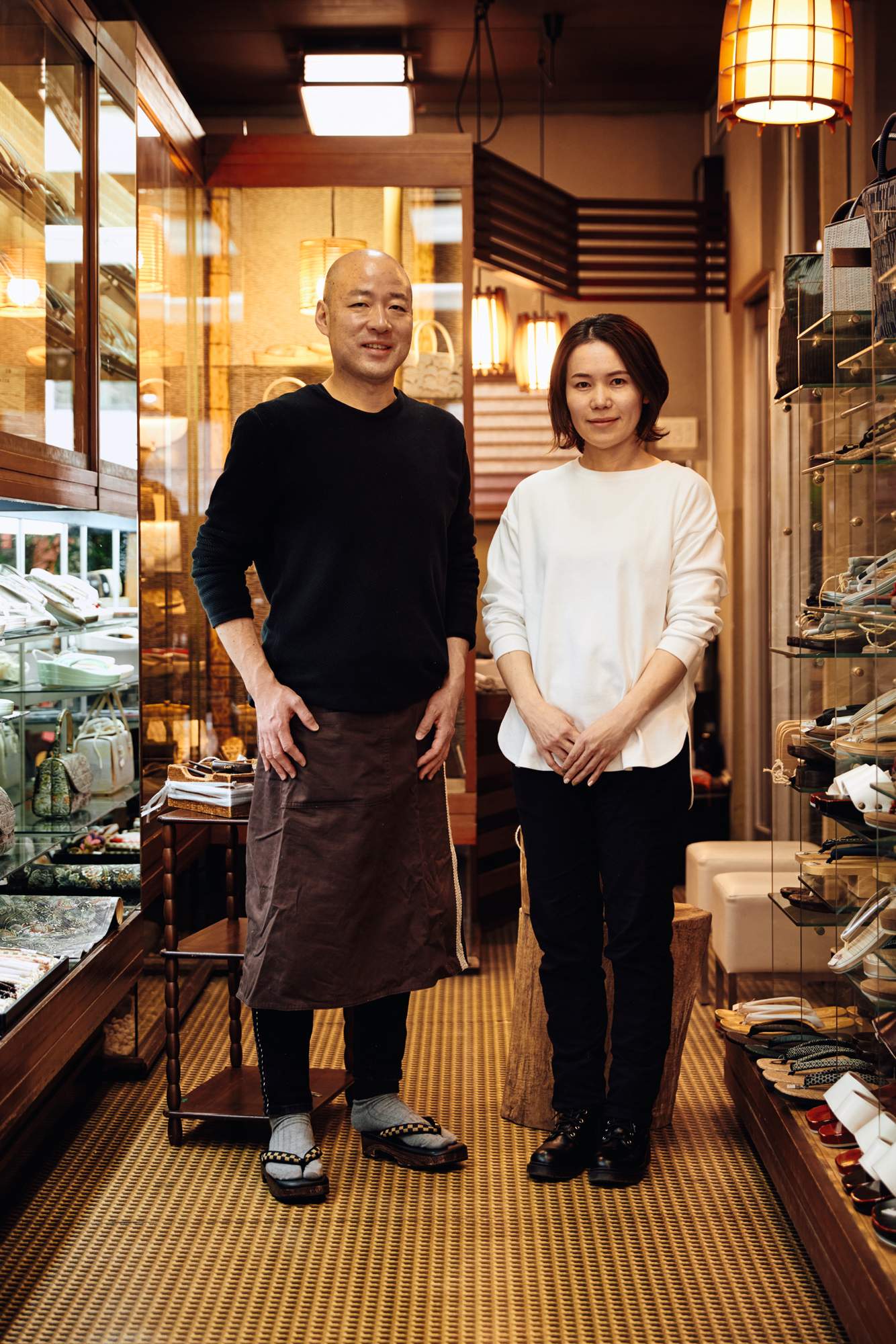
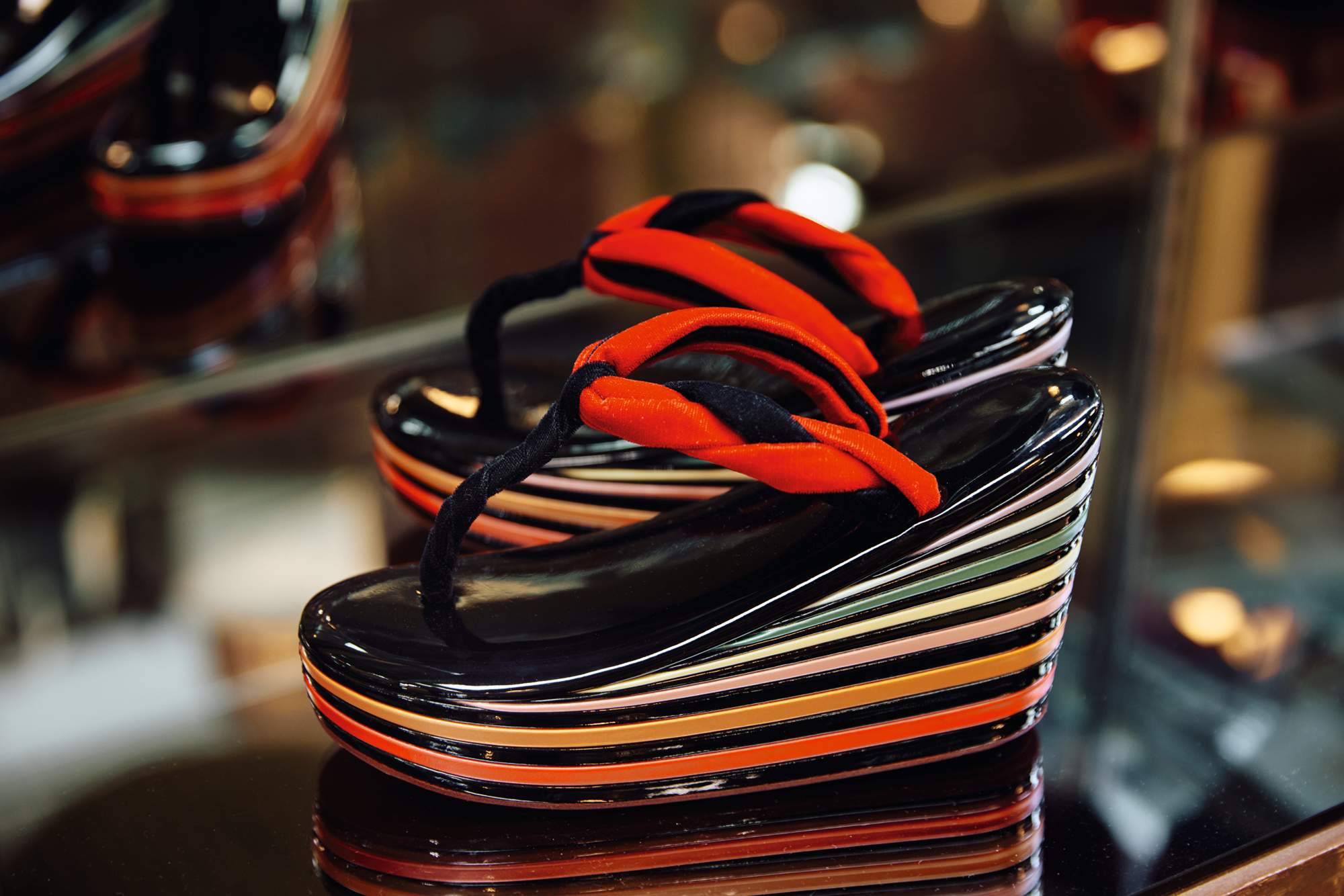
Sotaro now works with his son, Makoto, and daughter-in-law Junko (pictured), who also collaborate with a network of partner craftspeople across Japan. When a pair of zori sandals is finished, Makoto adjusts the hanao straps to perfectly fit the individual client’s feet. They stick to traditional hand-making methods and materials – leather for formal zori sandals; tatami and kiri wood for more casual pairs – but are innovative in their approach to design and comfort to suit contemporary lifestyles. Recently, they made a modern high-heeled series called Zori Sadayakko. “We constantly work on research and development to keep the craftsmanship alive,” says Sotaro.

Miyamoto Unosuke
Drum-maker
Venerable drum-maker Miyamoto Unosuke, founded in 1861, sits in historic Asakusa. Hidden behind its showroom is the workshop, where craftspeople are busy stretching cowhide over taiko drums; repairing mikoshi (portable shrines) from all over Japan; and creating musical instruments for gagaku (court music) as well as drums for kabuki and noh theatre. Eighth-generation president Yoshihiko Miyamoto is at the helm, steering the family business into the modern world. “Many arts require language but words aren’t needed for drums,” he says. “Race, age and gender don’t matter.”
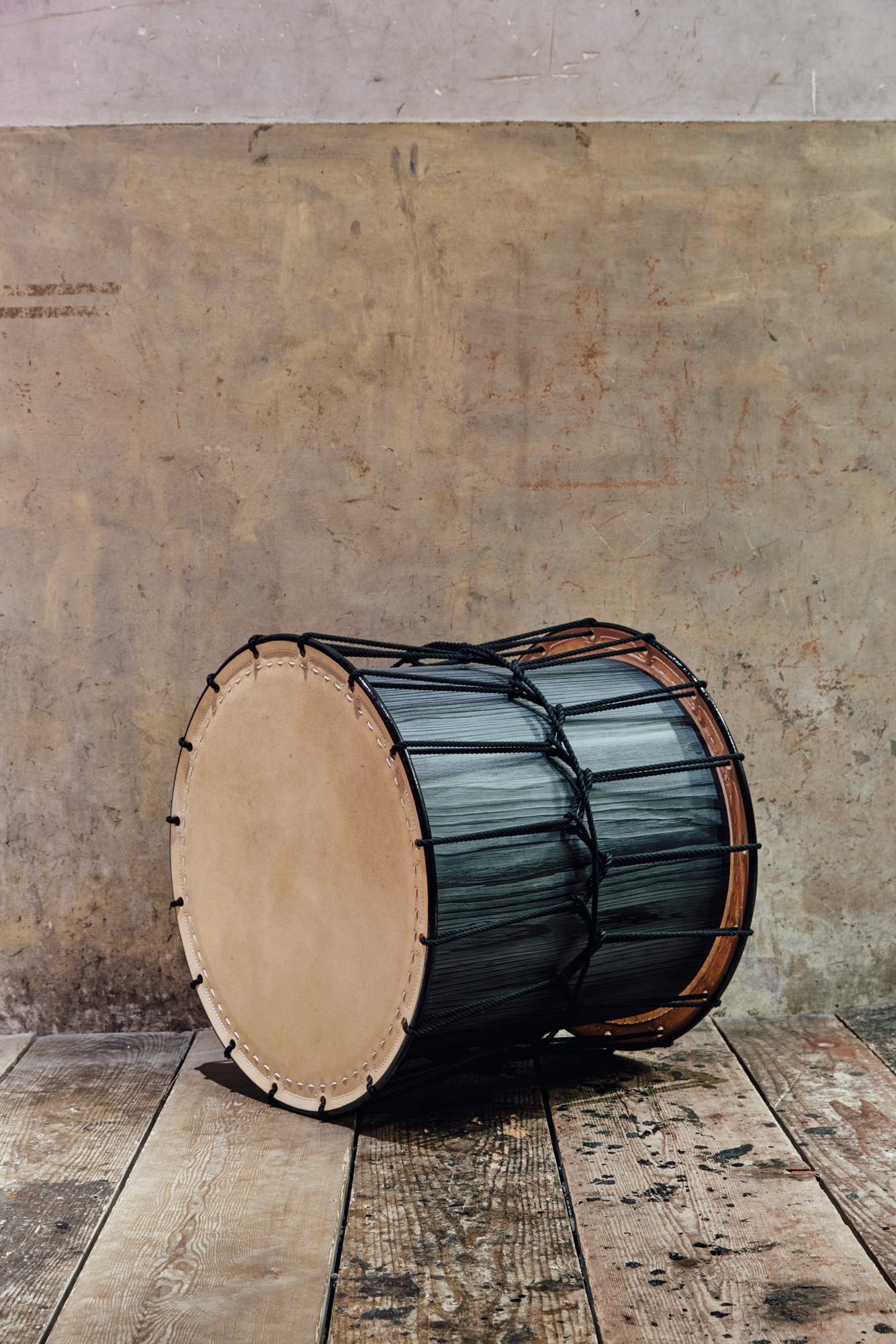

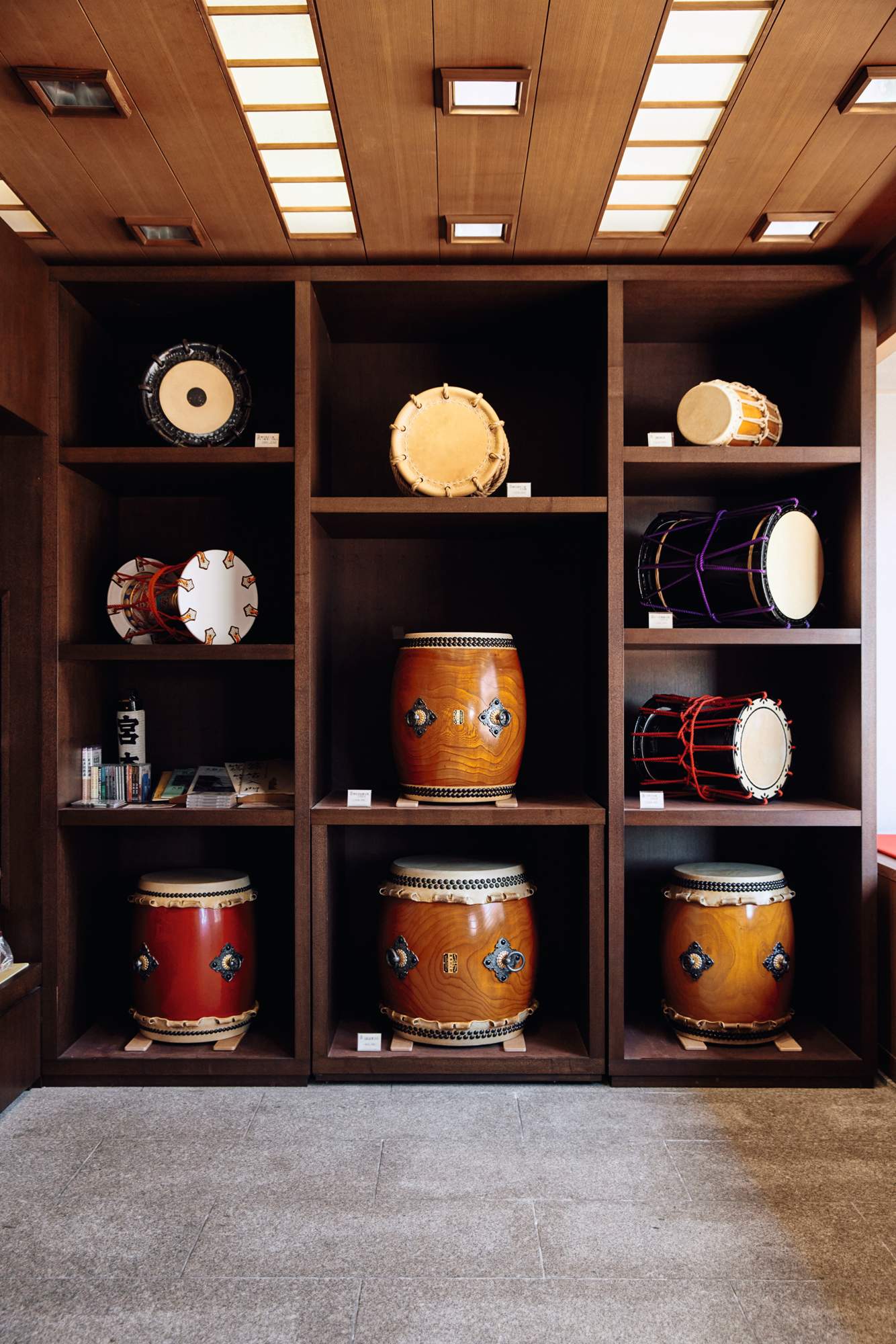
Miyamoto is not only a guardian of traditional manufacturing but also tirelessly promotes Japan’s rich festival culture as well as founding a drumming school and a musical ensemble. He recently launched a new jewellery brand, Kippu, which applies the craft techniques used to make ornamental metal fittings for shrines to rings, cuffs and brooches. For Edo Tokyo Kirari, he is working on a sustainable drum project that uses wood from Tokyo. “Running this company is a big responsibility,” he says. “I can’t help but be touched by all the people here who want to preserve these traditional skills.”
Hirose Dyeworks
Dyer
The traditional art of Edo komon textile printing is alive and well at Hirose Dyeworks. Yuichi Hirose (pictured) is the fourth generation to run the family-owned company, which has been producing delicately patterned rolls of kimono silk since 1918. The 43-year-old is following in the footsteps of his predecessors, printing the patterns by hand in a 90-year-old workshop.
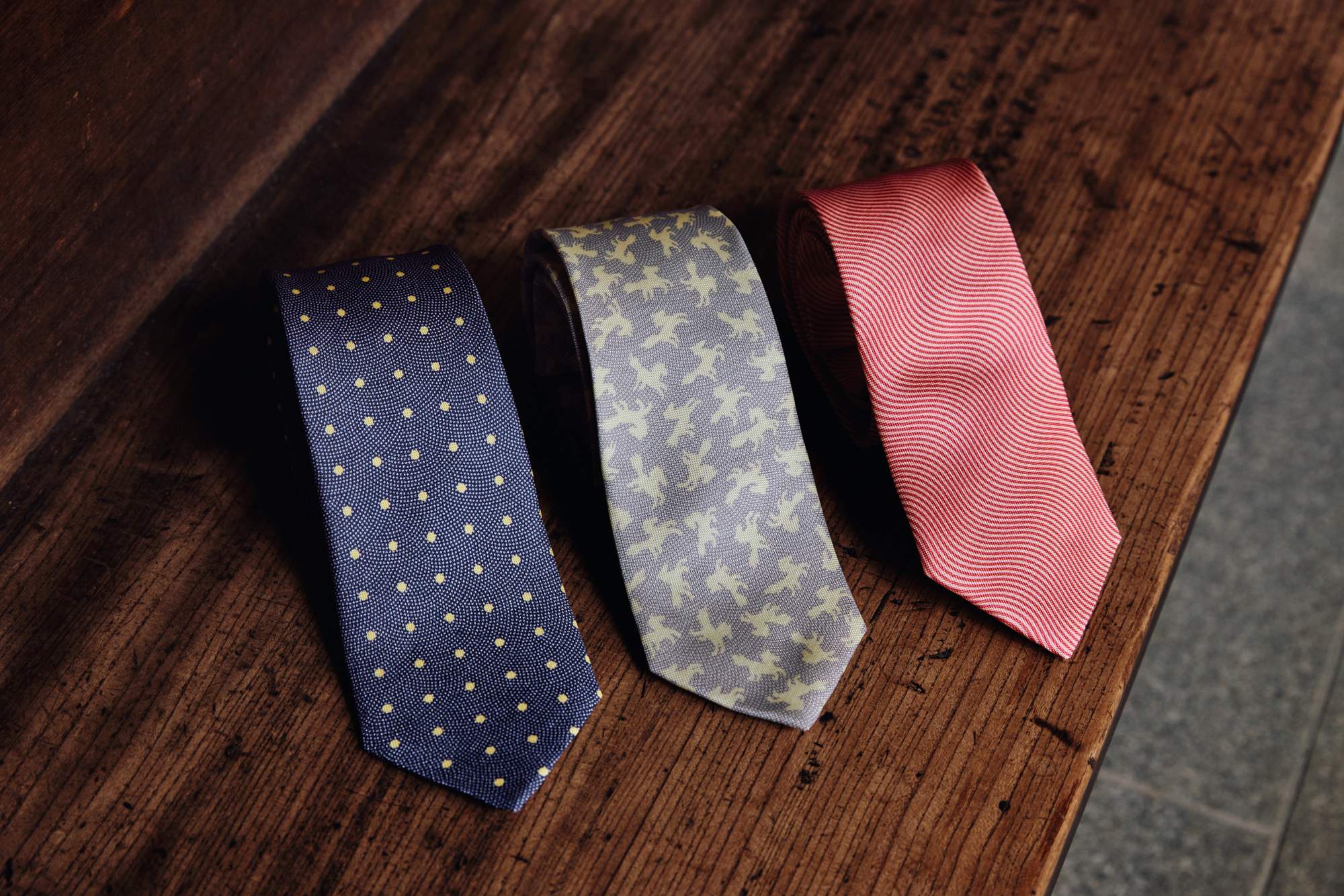
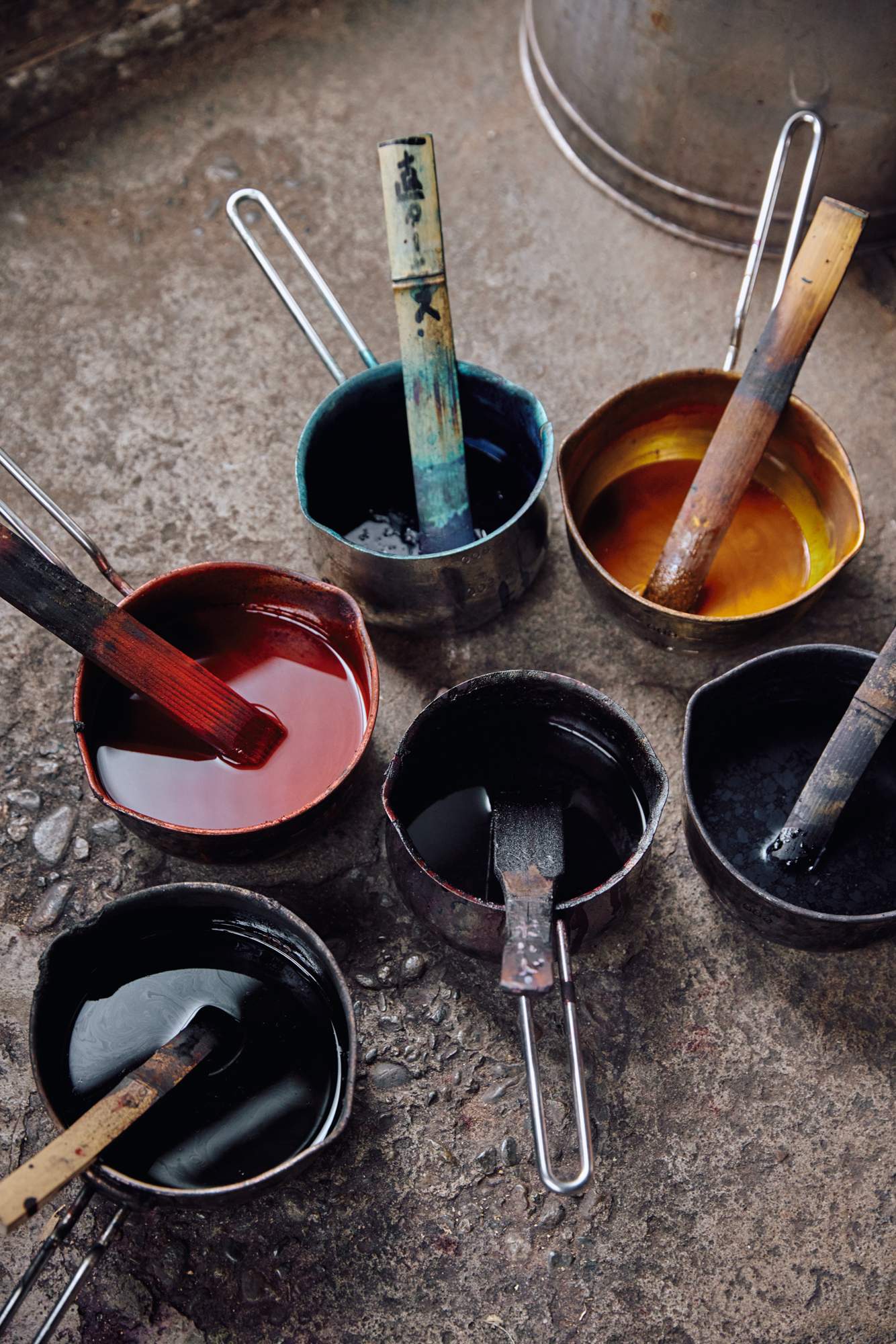
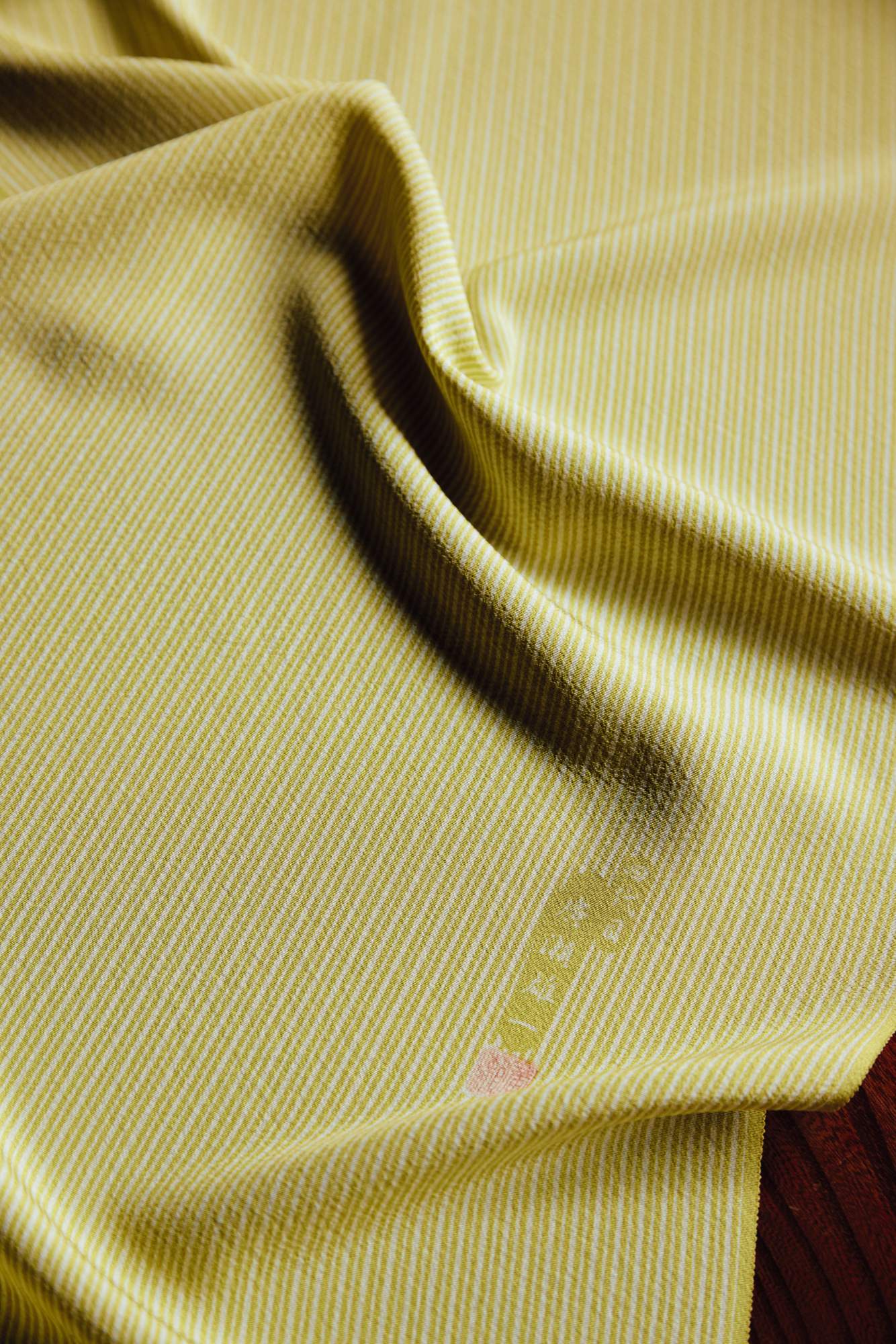
Silk is rolled onto a seven-metre-long mominoki (fir) board and a dye-resistant paste, which is made by mixing glue and charcoal, is applied over a washi paper stencil, handmade by specialist artisans. The silk is then dyed in seasonal colours mixed by Hirose. The workshop has an archive of 20,000 stencils, with 150 in regular circulation.
Hirose, who once aspired to be an Olympic windsurfer, launched a cashmere scarf brand in 2011 and makes silk for neckties. The ultra-soft scarves and vibrant ties, all hand-printed the traditional way, will be available from Edo Tokyo Kirari. “You can replicate tradition with modern techniques,” he says. “But, for me, true beauty is in something made by hand.” This subtle, highly skilled craft is as fresh today as it was 100 years ago.
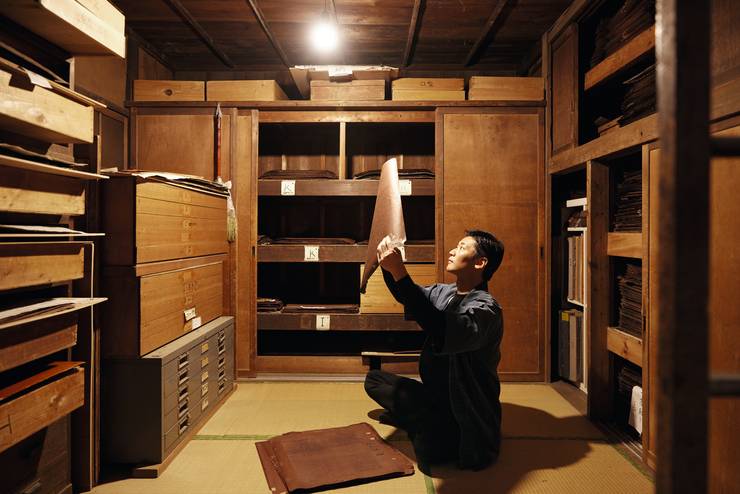
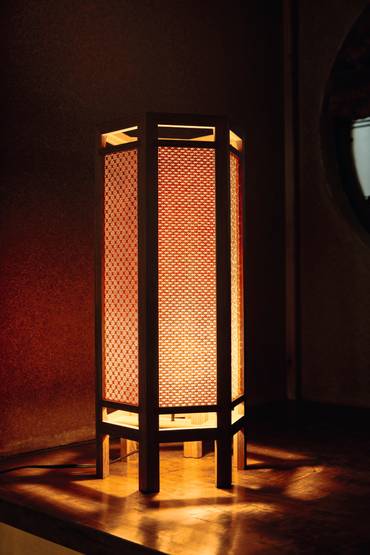
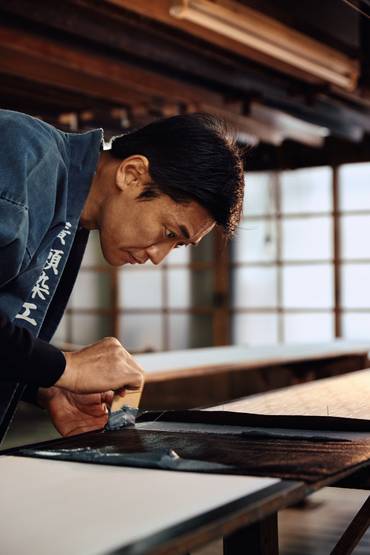
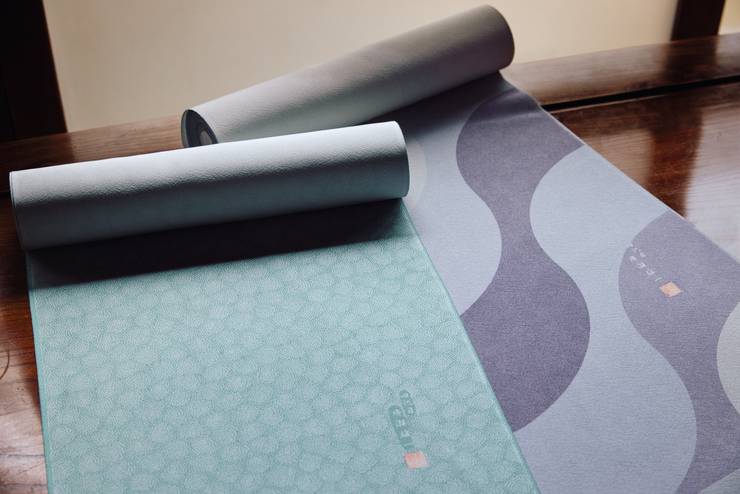
Isehan Honten
Cosmetic producer
Founded in 1825, Isehan Honten is Japan’s last maker of beni, a luminous red cosmetic for lips, cheeks and eyes that has been adored by fashion-conscious women for centuries. The key ingredient, Mogami safflowers, is grown in small quantities in Yamagata prefecture. The red pigment is extracted and then turned into a cosmetic product in a secret process only known to a handful of people, including the two craftsmen in the company. “It’s our mission to pass this traditional technique and beauty to future generations,” says seventh-generation head of the company Ichiro Sawada, who opened the Beni Museum to tell the history of make-up in Japan.
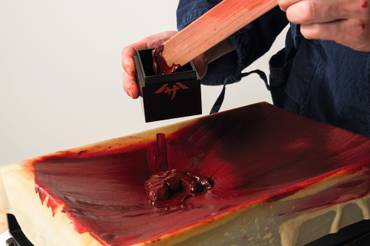
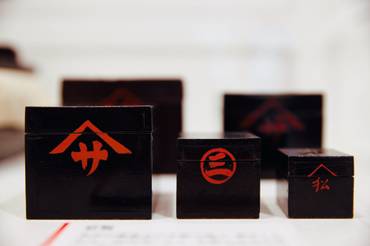
Presented in porcelain vessels, genuine Komachi beni is a glowing iridescent green when it’s dry – proof of its quality – but magically turns red with a stroke of a wet brush. “Komachi beni hasn’t changed for two centuries,” he says. “But innovation is key to preserve the heritage, regardless of whatever the trend of the time might be.”
For more about the Edo Tokyo Kirari Project, visit: edotokyokirari.jp
